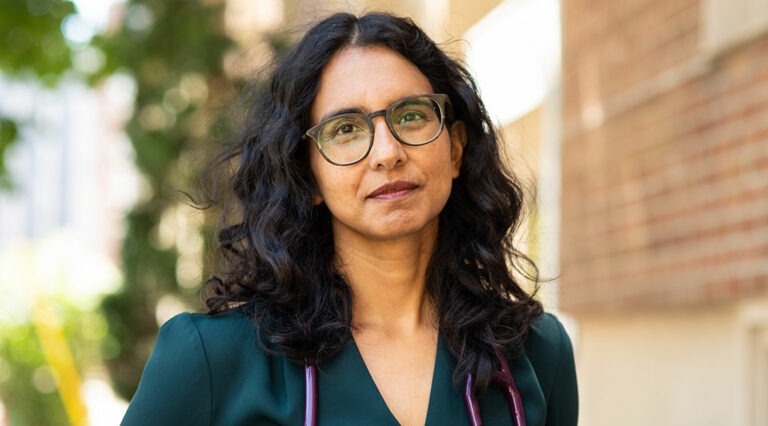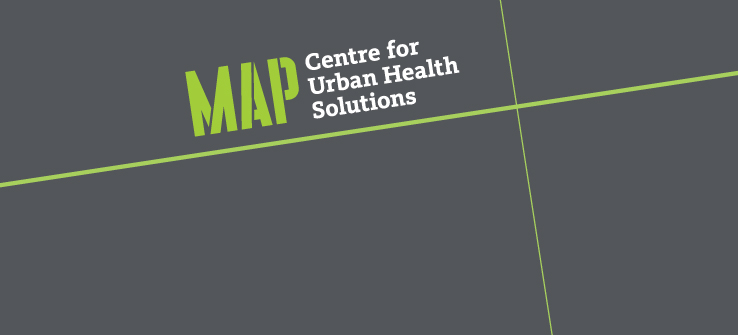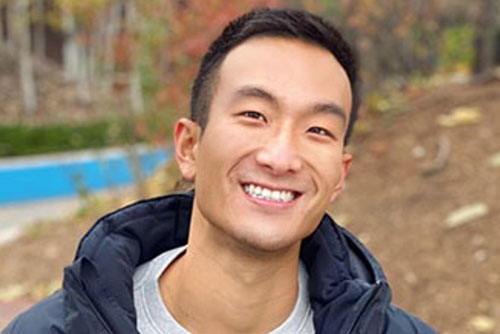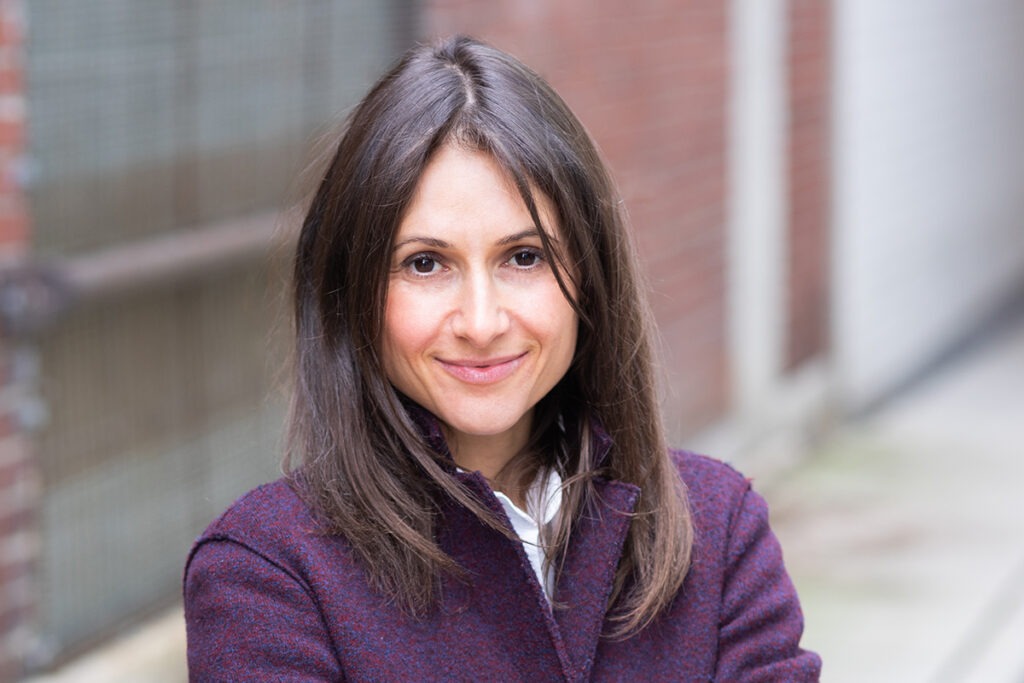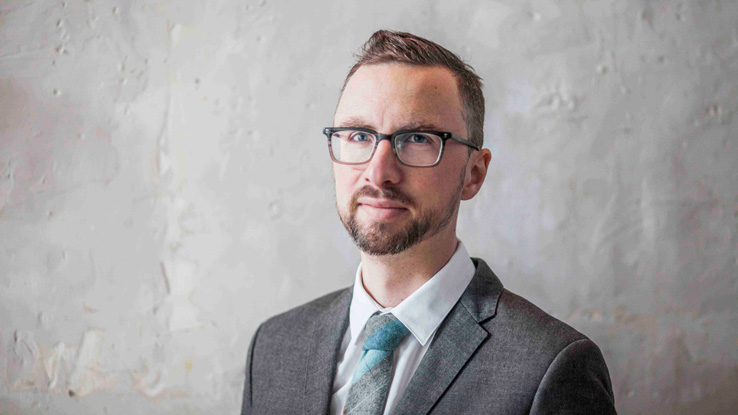September 28, 2021
Re: Planning and Housing Committee Item PH25.10 – New Regulatory Framework for Multi-Tenant Houses
We would like to acknowledge this matter was brought to our attention by individuals with lived experience in Multi-Tenant Houses who have raised this as an area of community priority.
We are health care providers, scientists and researchers who work in association with MAP Centre for Urban Health Solutions at St. Michael’s Hospital. We live in all areas of the city, and are united in our concern about the lack of good quality, permanent and deeply affordable housing in Toronto. We are pleased that the City of Toronto has put forth a framework to permit and regulate Multi-Tenant Houses across the city, and we expect the Mayor and Councillors who represent us to support this framework. We are calling on our Mayor and City Councillors to support the motion to regulate Multi-Tenant Houses across Toronto at the October 1st, 2021 session of City Council. We will be contacting our Councillors about this motion, and encouraging our co-workers, neighbours and community to do the same.
Multi-Tenant Houses (MTH), also known as rooming houses, have long been part of Toronto’s housing structure and make a significant contribution to the limited affordable housing stock in our city. A diverse cross-section of people rely on this housing stock, including people with lower incomes, students, recent immigrants, migrant workers, and people with disabilities.
In 1998, the provincial government amalgamated six municipalities to create the new “mega city” of Toronto. While MTH had been legally permitted in some of these municipalities, such as the old city of Toronto, they were not permitted in the former cities of North York, East York and Scarborough. More than 20 years later, Toronto has still not harmonized by-laws across the city, and MTH are still not technically allowed to exist in some areas.
This doesn’t mean they don’t exist—they do and always have. Instead, it means that tenants living in unregulated and unlicensed MTH have fewer options to protect their health and safety. This has ripple effects for the surrounding communities, which are much safer when MTH are regulated.
According to City of Toronto data, licensed MTH are far safer than unlicensed MTH. For instance, between the years 2010 to 2020, there were 18 MTH that were involved in fire fatalities and serious injuries, 16 of which were unlicensed. Additionally, the vast majority of MTH charges laid by Municipal Licensing & Standards are in neighbourhoods where they are not permitted. The Maytree Foundation’s human rights review of Toronto’s MTH policies also reported that individuals living in MTH in unpermitted areas are less likely to report substandard conditions and, therefore, live at greater risk of harm to their health and personal safety. Unpermitted houses are also more likely to violate existing regulations (i.e., the Ontario Building Code).
As health care providers and researchers, we see the impacts of sub-standard housing and housing instability on wellbeing, and on mental and physical health. We also know that when someone loses their housing, it has adverse consequences for their lives, families and communities. For instance, research suggests that when people experience involuntary loss of housing, they are more likely to also lose their job. We know that MTH often provides the only affordable option in the private housing market, and can potentially help people avoid homelessness.
Research on permitted MTH has shown that people of lower socioeconomic background and with existing health conditions have often resided in houses that are in poor physical condition. This is likely even worse for houses that are unpermitted. Good housing quality is critical for health—factors such as adequate space allocation, indoor air quality and proper waste and pest management are essential for disease prevention, especially in congregate living settings. Permitting and regulating MTH in unpermitted areas will create a means for the City to enforce quality standards across the City, which will ultimately benefit both tenants and surrounding communities.
The City staff report notes that the proposed framework will aim to take a phased approach that will include education and outreach to tenants on their rights, as well as support for landlords to meet property standards. We applaud the City for including this in their plan as it can help sustain existing MTH and provide opportunities to invest in improving this affordable housing stock.
From our vantage point within the health care sector, we would also like to share the following recommendations with City Council:
- Establish equitable support services to help MTH tenants retain their housing and assist qualifying landlords retain their homeownership once their area of the city is regulated. This could be achieved through collaboration with community agencies as well as establishing grant programs.
- Ensure that enforcement of the new regulations does not further harm and marginalize groups who are likely to live in MTH —this will be key to meeting the City’s human rights approach.
- At implementation, continue to engage in the multi-divisional cross collaboration (Fire Services; Toronto Building, Municipal Licensing & Standards; City Planning; Toronto Public Health) that was used to develop the new framework. This collaboration will contribute to the development of a more robust policy practice in relation to housing, health and community safety.
Ultimately, a harmonized MTH regulation can help improve current policy and practices and will allow for this affordable housing stock to be better integrated within our housing continuum.
We commend the City for taking steps to solving this long standing equity issue in our city. We encourage the City to continue to consult the community in finding ways to sustain and strengthen the quality of this affordable housing stock and ask the Mayor and City Council to support the regulation of MTH across Toronto at the upcoming Council meeting. This will align with the City’s commitment to advance a human rights based approach to housing as outlined in Housing TO 2020-2030 Action Plan.
What You Can Do
Call Your City Councillor and the Mayor: Members of Council Contact Information
Sign Community petition: The Federation of Metro Tenants’ Associations (FMTA)
Take the ACTO and CERA survey on Multi-Tenant Housing: Survey
City of Toronto: Multi-Tenant (Rooming) Houses Maytree Foundation: A Human Rights Review of Toronto’s Multi-Tenant Homes Policies
Signed by health care providers, scientists and researchers who work in association with MAP Centre for Urban Health Solutions at St. Michael’s Hospital:
- Stephen Hwang, Director, MAP Centre for Urban Health Solutions, Unity Health Toronto
- Ann Burchell, Scientist
- Andrew Pinto, Scientist and Physician
- Jesse Jenkinson, Postdoctoral Research Fellow
- Uzma Ahmed, Research Coordinator
- Galo F. Ginocchio, Research Coordinator
- Olivia Spandier, Research Coordinator
- Y. Celia Huang, Research Coordinator
- Ashley Mah, Research Co-ordinator
- Triti Khorasheh, Research Coordinator
- Madison Ford, Research Coordinator
- Anaita Kharwanwala, Administrative Assistant
- Anna Yeung, Research Manager
- Nav Persaud, Scientist, Family Physician, Canada Research Chair in Health Justice
- Flora Matheson, Scientist
- Ruby Sniderman, Research Manager
- Kimberly Devotta, Research Manager
- Alexandra Carasco, Research Coordinator
- Evie Gogosis, Research Manager
- Aine Workentin, Research Coordinator
- James Watson, Research Manager
- Andree Schuler, Research Associate
- Ahmed Bayoumi, Fondation Baxter and Alma Ricard Chair in Inner City Health, MAP Centre for Urban Health Solutions, Unity Health Toronto
- Fred Ellerington, Homeless Outreach Counsellor
- Zoe Dodd, MES, Community Scholar
- Vera Dounaevskaia , MD
- Rosane Nisenbaum, Biostatistician
- Dr. James Rassos, GIM Staff Physician
- Jessica Demeria, Indigenous research coordinator
- Sharmistha Mishra, Infectious Disease Physician and Associate Professor, University of Toronto
- Anne-Marie Tynan, Research Program Manager
- Jemal Demeke, Research Coordinator
- Mackenzie Hamilton, Junior Data Science Specialist
- Kate Francombe Pridham, Research Program Manager, Homelessness, Housing, and Health
- Ketan Shankardass, Affiliate Scientist
- Cheryl Rowe, Community Psychiatrist
- Stefan Baral, Family and Population Health Physician, Inner City Health Associates
- Suzanne Shoush, Graduate student, Staff Physician, St. Michael’s Unity Health
- Ayan Yusuf, Research Coordinator
- James Kitchens, Staff Physician, St. Michael’s Hospital
- Nazlee Maghsoudi, Research Manager
- Angela Onkay Ho, Psychiatrist
- Mara Waters, Internal medicine resident
- Tracy Rook, Registered Nurse
- Melissa Capozzolo, Registered Practical Nurse
- Shazeen Suleman, Investigator
- Aaron Orkin, Physician
- Nigel Champion, Resident Doctor
- Emily Holton, Communications Manager
- İrem Burcu Baltaş, Registered Nurse
- Gillian Kennedy, Registered Nurse
- Michelle Catchpole, Research Business Analyst
- Charles Ozzoude, Researcher
- Roisin McElroy, MD CCFP(EM)
- John Ecker, Research Manager
- Brooke Fraser , Internal medicine resident – PGY2
- Carol Munroe, Medical Admin Administrator
- Erica Di Ruggiero, Associate Professor
- Kristy Yiu, Research Coordinator
- Peter Gozdyra, Visiting Researcher
- Naheed Dosani, Lecturer, Department of Family & Community Medicine, University of Toronto
- Madeleine Ritts, Social worker
- Suzanne Zerger, Research Program Manager
- Billie-Jo Hardy, Scientist, WIHV, Women’s College Hospital
- David Reycraft , Director – Housing Services Dixon Hall Neighbourhood Services
- Sara Pickersgill, MD
- Andrea A. Cortinois, Assistant Professor, University of Toronto
- Deborah Pink, Physician
- Asha Aggarwal, Social Worker
- Paul Zijlstra, Registered Practical Nurse
- Lisa Forman, Associate Professor, Dalla Lana School of Public Health, University of Toronto
- James Lachaud, Postdoctoral researcher
- Luke Hays, Emergency Doctor
- Darryl Langendoen, Social Worker
- Opal Sparks, Advocate
- Rene Adams, Community Expert
- Samantha Green, Family Physician, Inner City Health Associates and Unity Health Toronto
- Maryam Daneshvarfard, Research Coordinator
- Carol Strike, Professor/Scientist
- Heather McLean, Research Assistant I
- Emilie Frenette, NP-PHC
- George Da Silva, Person who was homeless (Peer Research Assistant)
- Jesse Knight, PhD Candidate
- Veronica Snooks, Community Expert Group member, Dream team member, PWLE caucas member
- Terry Pariseau, Coordinated Access Engagement Coordinator
- Denise Gastaldo, Associate Professor, University of Toronto
- Sa’ad Talia , Community Expert Group Research Consultant
- Veronica van Dam, Nurse practitioner
- Gary Bloch, Family Physician; Associate Professor, University of Toronto
- Elizabeth Harrison, Registered Nurse
- Adam Suleman, Resident Physician
- Daniela Mergarten, Co-Chair of the lived experience caucus of the Toronto Alliance to End Homelessness
- Pearl Buhariwala, Research Coordinator
- Yue Chen, Junior Data Scientist
- Nicole Champagne, Social Worker
- Kira Heineck, Executive Director, Toronto Alliance to End Homelessness
- Chan Drepaul, Program Manager
- Dr Laura Pacione, Child and Adolescent Psychiatrist
- Drew Silverthorn, Community Mental Health Social Worker
- Arthur McLuhan, Postdoctoral Research Fellow
- Amy Katz , Knowledge Translation Specialist
- Kim Chamberland, Registered Nurse
- Bee Lee Soh, Community Expert Group member
- Dr. Farah N. Mawani, Postdoctoral Fellow
- Vikram Jayanth Ramalingam Research Assistant
- Reena Pattani, Physician
- John Sollazzo, Emergency Physician
- Alyssa Ranieri, Homeless Outreach Counsellor
- Christina HW Kim, Resident Physician
- Wale Ajiboye, Senior Research Associate
- Philip Garwood, Resident Doctor

